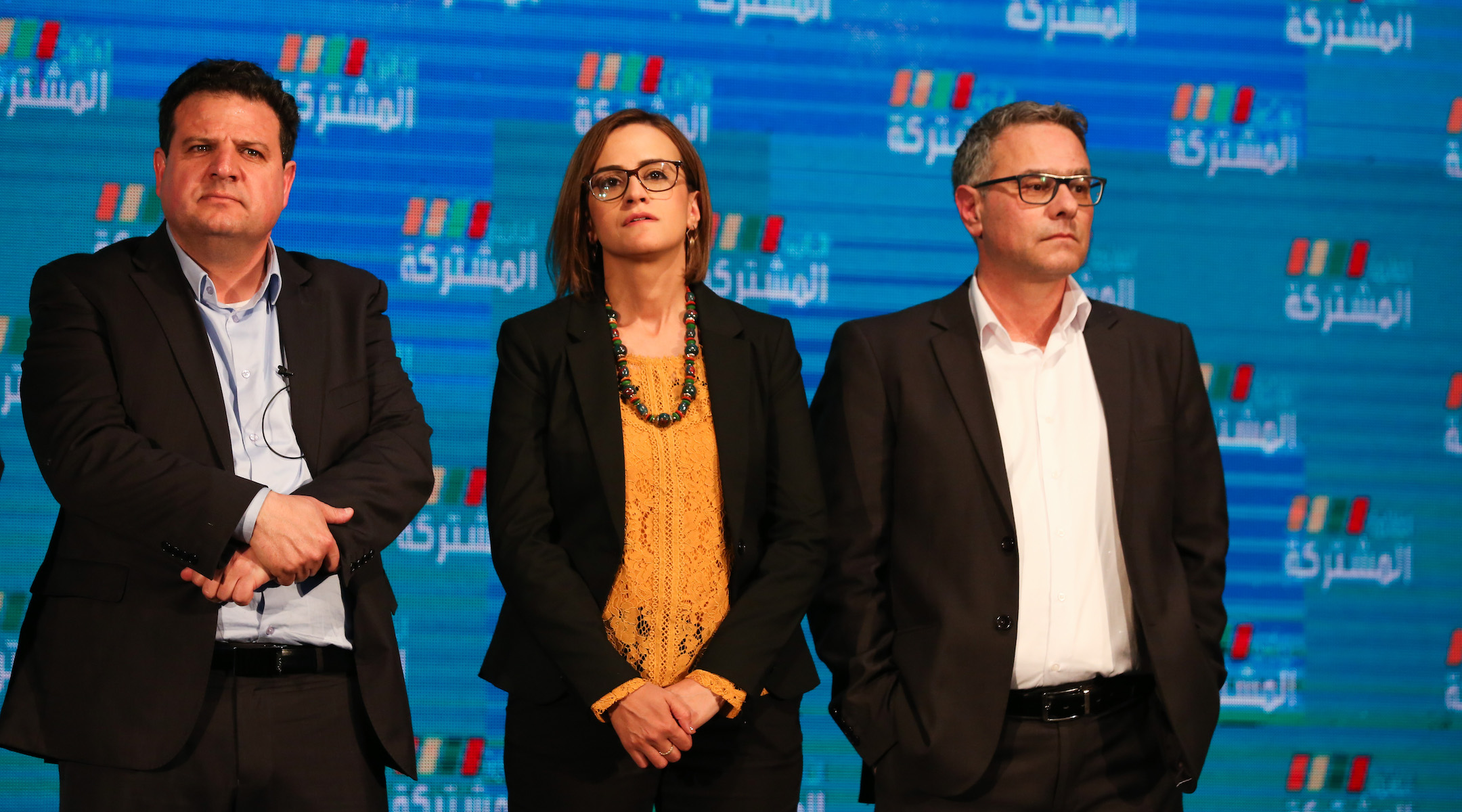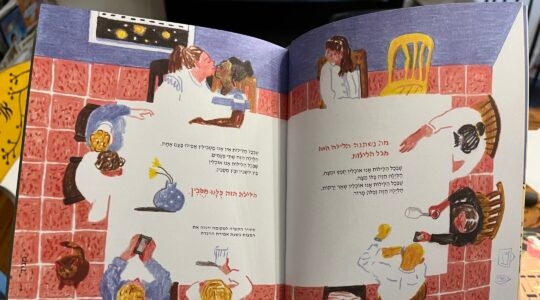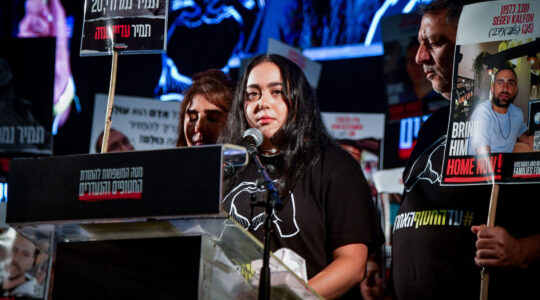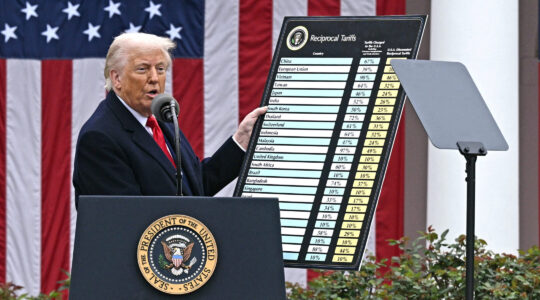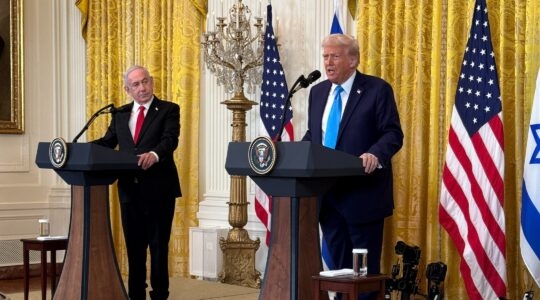(JTA) — Amid all the justifiable focus on the coronavirus and its consequences, there was major political news in Israel this week: Benny Gantz, the Blue and White party leader, was tapped by the president to assemble a government coalition — bringing Prime Minister Benjamin Netanyahu closer to his ouster than he’s been in 11 years.
Buried in the development is a history-making nugget: The Joint List of Arab-dominated parties was among those that recommended Gantz to President Reuven Rivlin as the man they wanted to form a coalition. Its 15 votes provided the necessary majority of 61.
It makes obvious sense: The Arab parties want to oust Netanyahu, whose ministers have reviled their lawmakers as traitors. But the referral heralded a breakthrough of integration that has vexed Jews and Arabs since before the state was established more than seven decades ago.
Here’s what drove the Joint List to recommend Gantz for the prime ministership and what it could mean for Israel.
Why is this historic?
Gantz may not form a government in the next three or so weeks, and if he does, it may be a national unity sharing arrangement with Netanyahu necessitated by the coronavirus that would exclude the Joint List.
In any case, the Joint List would only support the government from outside a coalition — meaning that sometimes it would vote with Gantz and others in the bloc but not officially join the group in name.
There’s no guarantee that will happen. Last week, a key party outside Gantz’s bloc that had pledged support and two others already in his camp threatened to leave the coalition group over Gantz’s negotiations with the Joint List.
But before all that theoretical stuff happens, just the Joint List’s referral, and Gantz’s embrace of it, means an Arab-Israeli voice at the national table has taken a leap from unimaginable to inevitable.
“It represents a historic change for the Arab public,” Maisam Jaljuli, a senior official in Hadash, one of the four parties that makes up the Joint List, told the Jewish Telegraphic Agency in an interview. “It signifies a desire for integration.”
So this has never happened?
It’s actually not the first time that Arab-dominated parties have supported an Israeli government. However, it doesn’t take anything away from this political moment because Israeli politics have undergone tectonic shifts over the past few decades.
Hadash and another Arab-dominated party, the Arab Democratic Party, backed the government led by Prime Minister Yitzhak Rabin and then, after his assassination, Shimon Peres, from 1992 to 1996.
Their five members were critical ino keeping Rabin from being ousted after he launched the Oslo Accords. The peace deal with the Palestinians spurred the haredi Orthodox Shas party to leave the government in 1993, reducing Rabin’s Knesset majority to the bare minimum of 61.
The two Arab parties reaped benefits for their support. Those four years included rollbacks of discriminatory laws and major investment in infrastructure in the Arab sector.
But Netanyahu’s election in 1996, his policy of marginalizing Arab-dominated parties and the second intifada of Arab violence launched in 2000 made those four years of influence for Arab legislators an anomalous blip.
How the Arab and Jewish parties grew apart
At the outset of the second intifada, Israeli police killed 13 Arab-Israeli protesters. Palestinian terrorist attacks on Israeli civilians skyrocketed, and some Arab-Israeli political figures voiced support for the violence. Jewish and Arab communities grew increasingly radicalized and there was a breakdown in trust. The integration of Arabs and Jews, an issue that had preoccupied early Zionists, seemed further away than ever.
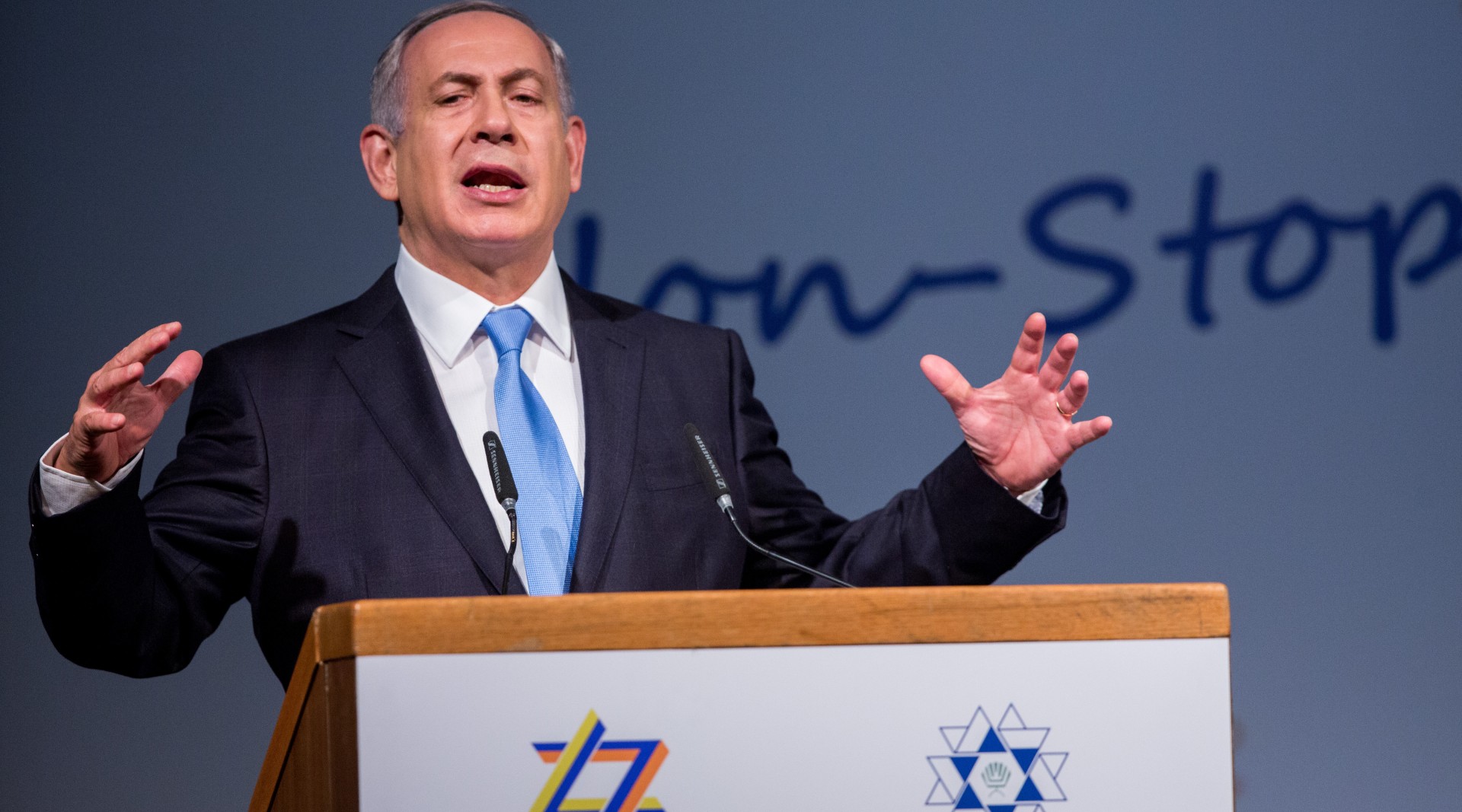
Israeli Prime Minister Benjamin Netanyahu speaks at the 37th World Zionist Congress in Jerusalem, Oct. 20, 2015. (Yonatan Sindel/Flash90)
That began to change during the 2015 elections, when there was talk of the Joint List supporting a Labor Party-led government. But Netanyahu, who on the morning of Election Day warned his supporters of Arabs in buses voting “in droves,” pulled out a surprise victory.
Talk of Arab-led party backing for a center-right government also resurfaced before and after the deadlocked elections of April and September.
The latest election, on March 2, was the third in less than a year and the first that offered any candidate a viable way of reaching a parliamentary majority of 61 Knesset seats. A centrist like Gantz cannot ignore 15 Knesset members in seeking to form a government, if he is truly serious about dethroning Netanyahu.
So the notion of an alliance, however tenuous, between Zionist and Arab-led parties is no longer an anomaly but a matter of fact for the center and the left.
“We won’t be relegated to the rear, where no one takes us into account,” Jaljuli said.
How we got to now: Netanyahu, and also Trump
The Joint List’s move was not so much about its love for Gantz — the former head of Israel’s army — as it was about its desire to remove a long-hated rival from power.
Since 2015, Netanyahu and his Likud party have moved rightward both in policies and rhetoric. Netanyahu’s targeting that year of “Arab voters,” as opposed to “Arab parties,” worked to erode a longstanding principle among Zionist politicians that Arab Israelis are equal to Jewish ones.
Massive Likud billboard ads this campaign cycle featured a photo of Gantz sitting alongside Ahmad Tibi, a leader of the Taal Party — one of the four on the Joint List — who is reviled on the right wing for once having been an adviser to PLO leader Yasser Arafat.
Arab voters saw that as delegitimizing their elected leadership. The message, in their view, was that even sitting alongside an Arab made a Jew suspect.
“The billboards delegitimize Arab leaders to prevent Gantz from forming a government with the backing of the minority parties,” said Shibley Telhami, a senior fellow at the Brookings Institution who has focused on intercommunal relations in Israel.
Netanyahu over the past three years has pushed through a nation-state law, which he said consolidated Israel’s character as a Jewish state. Arabs, however, saw the measure as codifying discrimination, and another law that penalized illegal building as effectively targeting Arabs more than Jews.
Furthermore, President Donald Trump’s release of his long-awaited peace plan in January may have backfired. The plan, with its support of Israeli control over some of the West Bank, was seen as a bid to help Netanyahu consolidate his right-wing support.
But another provision suggested pushing areas of Israel populated mainly by Arab citizens into a future Palestinian state. That sparked cries of protest from the Arab-Israeli community, in turn prompting Israeli and U.S. figures to backpedal.
The result was high turnout among Arab-Israeli voters, which only increased with each election over the past year.
It was also about integration
Ayman Odeh, the Hadash leader, forged the four disparate parties into the Joint List in 2015 primarily to make sure Arab parties had representation in the Knesset after a new law increased the threshold for parties to make the cut. He succeeded beyond expectations, electing 13 Knesset members, the third-largest representation in the parliament.
He used his newfound fame to advance a message of integration, one that advanced Arab equality within the reality of a Jewish state. Odeh does not embrace Zionism, but he is careful not to reject it either.
“Cooperation between people, Arab and Jewish, is the only principled political strategy that will lead to a better future for us all,” he wrote last year in The New York Times.
Odeh’s outlook reflects the reality of an Arab minority that has developed a robust middle class packed with physicians, businesspeople and professionals. These people in their work spheres have become Hebrew speakers and formed friendships with Jewish Israelis.
Telhami said that the anti-Jewish Arab propaganda outside of Israel and the Palestinian areas no longer resonates for Arab Israelis, if it ever did.
“A young generation wants to be more involved in politics,” he said. “They feel Arab, and they have an Arab identity and a Palestinian identity. But they are also Israeli in many ways, a vast majority are born after 1948, it’s the state they have grown up with, the media, the school system, the language, Hebrew, the workplace where they have close friends and colleagues.
“The Jew is not the ‘other,’ it is part of who they are.”
JTA has documented Jewish history in real-time for over a century. Keep our journalism strong by joining us in supporting independent, award-winning reporting.
